About Yarovit-Yarilo
About Yarovit-Yarilo

Today I present you my translation of fragments of two polish academic publications that are great favorites of mine. Fragments chosen are centered around Yarovit and Yarilo. My own comments will be indicated by a „trans. note” disclaimer. The fragments below are merely a part of larger text. I apologize for any context lost to the lack of broader perspective on the whole of the publication.
Mitologia Słowian by Aleksander Gieysztor
Chapter V: Principal deities and myths
Subchapter: „Perun’s many ways - Sventovit, Ruyevit & company, Yarovit-Yarilo”
Yarovit-Yarilo
A deity called Yarovit (trans. note: Herovith, Gerovit, pl: Jarowit) was worshipped in two locations settled by polabian Slavs - in pomeranian Wolgast and in Havelberg, a gord inhabited by the Brizans tribe (pl: Brzeżanie). During the mission of bambergian bishop Otton in Wolgost in 1128 one of his priests hid from an angry crowd in a pagan temple, and there found a giant shield covered in golden plates, that was considered untouchable and would only be carried out during war time, as a blessing of good luck. The preacher snatched the sacred shield and ran back out of the temple terrifying the pursuing crowd - in the sput of the moment they thought they see Yarovit himself. One of the writers compares him to Mars, another calls him the god of war - there is no doubt Yarovit was a martial god. It’s hard to tell if there was any statue in his temple, as the escaping priest only noticed the shield. A shield is a ritual object in many martial cults, for example in roman Regia (trans. note: royal house on the ancient Forum Romanum) a most sacred shield was watched over by guards. So called „Stone of Yarovit” in St. Peter’s church of Wolgast (trans. note: Wolgast is now located in the northeast corner of Germany) is a tombstone dating to the earliest christian times. One of the polabian villagers saw Yarovit appear to him „in the robes of his idol” to warn him about the coming missionaries - so there seems to have existed some idol/statue of him (trans. note: episode from Vita s. Ottonis III by Ebonis).
There are no doubts as to the origin of this deity’s name. It came from the root jar-, jaro- meaning strength or severity, but also conveying the idea of stregth coming from youth, as in slavic word „jar” meaning spring. Similar military competences and analogical anatomy of the names strongly connect Yarovit and Sventovit (pl: Świętowit) with one another and with Perun - the supreme warrior god. We could try to follow Ivanov and Toporov (trans. note: famous russian folklorists) in their attempts to strengthen this thesis by means of analysing folklore and comparative religious studies. The baseline for all scholars here is belarusian text from 1846 describing Yarilo as a young man in white robes, barefoot, with human head under his right arm and stalks of rye in his left hand, in a herbal wreath, on a white horse. A ritual, which took place on 27th of April, to welcome spring before the first plowing, was performed by a procession of young girls, one of them dressed as Jarilo, sitting on a white horse, the others singing to her
„Yarilo wandered all over the world / Rye grew high in the fields, he gave women children / And where he set his foot/ There a stack of rye / Where he’s in the grain/ There the stalks grow tall”
Along Yarovit and Yarilo there is also a third name entangled in the cult practices, „Yarun” (pl: Jarun), a ruthenian idol named in Laurentian Codex, as well as a collection of common slavic words, ruthenian „jarovoj” - „of spring” „vernal”; polish word „jare” used to describe grains planted in the spring (trans. note: as opposed to „ozime” grains growing over the winter), ruthenian and czech word for spring „jar”.
As much as we can question the date and quality of this belarusian text it’s undeniable that there is an archaic note ringing in those beliefs - white robes and white horse, flowers and rye stalks, the head held by a victorious rider, the barefoot man, touching the earth with his feet in a cultically significant way, making grain sprout wherever he steps, opening the fields in the spring, with his name, the surveying of the fields. He has been accepted, his traits amalgamated with those of St. George (Sveti Jurij) who is celebrated in some places on 23rd of April (trans. note: julian, not gregorian), accompanied by burning of female effigy called Marena/Marzanna, personifying winter or death, a harbinger of spring. Sometimes young Yarilo is juxtaposed with the old Yarilo, who gives up his place - perhaps loses it in a fight with his young rival.
We can see a bit of a duality shaping up in the image of Yarovit-Yarilo-Yaruna. On one hand he is a warrior, on another an overseer of agricultural activity, which, despite Ivanovs and Toporov’s opinions, doesn’t take any odd naturalistic interpretations on the part of the people as it naturally belongs to the dominion of supreme deities - even Jupiter comes down to bless the roman farmer during his spring festival Vinalii, that falls on… 23rd April.
We also need to examine the toponimastic evidence: the city of Jarilovo and no less than four settlements called Jarilovic in the area od Novogrod the Great. In 18th century diocese of Voronezh festivities were held around an idol called Yarilo from Wednesday to Friday or Saturday in the week after Green Week, as late as 1673 a man would lead the festival, adorned with flowers and bells, with his face painted red and white.
Religia Słowian by Andrzej Szyjewski
Chapter V: The Lost Gods
Subchapter: „Deities of fertility and vegetation”, fragments
We can see the solar hero association even more prominently in Yarovit, worshipped in Wolgast and Havelberg. His very name „Yarovit”, „The Young Victor” is connected to spring, youthful strenght and sexual passion (as in slavic words „jar” - spring, „jurny” - virile, manly, or the phrase „stary ale jary” meaning something along the lines of „old but tough”). This particular god watched over the fertility of fields and forests, humans and beasts - or so we can guess from the threats of Yarovit’s priest made against all those who will choose the „german god” (trans. note: abrahamic god) over their local deity. In Wolgast a sacred golden shield of Jarowit was held described as „great of size and exquisitely made”, a clear solar symbol, that nobody but the god or his priest could touch. As the greatest sanctity in the temple to the polabians it was also a symbol of victory - let’s not forget that Otto of Bamberg describes Yarovit as a war god similar to Mars. As the greatest, untouchable sacred object, and at the same time the harbinger of victory it corresponds fully in its symbolism to the white horse of Sventovit. In the „Vita s. Ottonis” we find a clear reference to Yarovit as the god of military, his name is translated into latin as „Mars” („deo suo Gerovito, qui lingua Latina Mars dictur). Just like with Sventovit we see a trio of interconnected associations: fertility - solar hero - war.
The celebrations of Yarilo mentioned by the missionaries of Otto were likely the planting festival of 15th April. It could involve the god’s „descent” among the people, enacted with the help of the sacred shield. That the god spoke through the lips of żerca (slavic priest) we know from other versions of „Vita s. Ottonis” (trans. note: hagiographic writings about Saint Otto). Scholars try to reconstruct the pre-christian celebrations through XVIII century ethnographic materials concerning Yarilo (admittedly not Yarovit), with ruthenian and belarusian origins. Texts recovered from diocese of Voronezh mention local bishop putting an end to the festivities surrounding Yarilo held on 23rd April in julian calendar (15th of April corresponds in gregorian). In christian context Yarilo is replaced by Saint Jurij (description of the same ritual as one described above follows, girl dressed up as Yarilo, the same song). People would dance circle dances (korovod) on top of the freshly planted fields and end the day with a feast with orgiastic elements. The purpose of the rituals was to close the winter and open the spring; Yarilo opens the gates of earth, letting the spring out.
Yarilo’s attributes clearly point to his role as god of vegetation and fertility. The girl assuming his likeness during the festival, also known as Wiosnołka or Wiesnowka (trans. notes: pronounciation „vyos-NOHW-kah” or „vyes-NOHV-kah”) could be an echo of „divine bride”, an offering to the god, an incentive to arrive with the spring. Many songs refer to Yarilo causing the earth to sprout and bloom as he walks but also summoning dancing girls to him. Circle dances, white robes, white horse and the cut off head are all elements of solar symbolism. The head belongs to Old Yarilo, dethorned and overpowered by his young son. All over the world similar symbols exist - from celtic Curoi to mayan Hunahpu. Young Yarilo matures and dies as the harvest unfolds, then at the end of summer a funeral is held - this time main roles were played by young married women not maidens. They made an effigy of Yarilo (putting some extra effort into shaping his reproductive organs) that they called Kostrub („COST-roob”) and then they put him into his grave, in the ground since in the earth the sun loses it’s powers and dies, letting the new sun take over. The people would sing and cry out about Yarilo dying and ask him to get back on his horse in his golden saddle. Attempts to reconstruct the rituals seem to show that young Jarilo on white horse was juxtaposed with old Yarilo on black goat. Southern slavs practice similar rituals of burning old Badniak (a piece of wood with forked roots) on Christmas Eve to make place for young Božič (son of god). Western Slavs don’t have a deity corresponding to Yarilo - they close the winter in rituals involving Marena/Marzanna, followed by a procession carrying around „maik” or „nowe lato” symbolized by the peak of an evergreen coniferous tree or a rooster as a solar bird.
The Slavs were an agricultural society so agrarian deities were their primary source of relations with divine, cosmic forces. There is a certain myth/archetype that is characteristic for early farmers, the myth of creative murder, in which the first birth, growth and harvest are prompted by the first death - death of a deity, hero, ancestor, who dies sacrificing himself for the people, and from his body the first plants spring, allowing the people to survive. That myth, encated in many cultures in many ways leads to the cincept of a solar god that dies and is reborn cyclically, whose individual fate is reflected by the cycle of growing grain. The stalks loose their heads under the sickles for people to be able to feed. Yarilo (and maybe even Yarovit) makes identical sacrifice.
Art: Jaruna by Ada Konieczna
More Posts from Nastysynth and Others

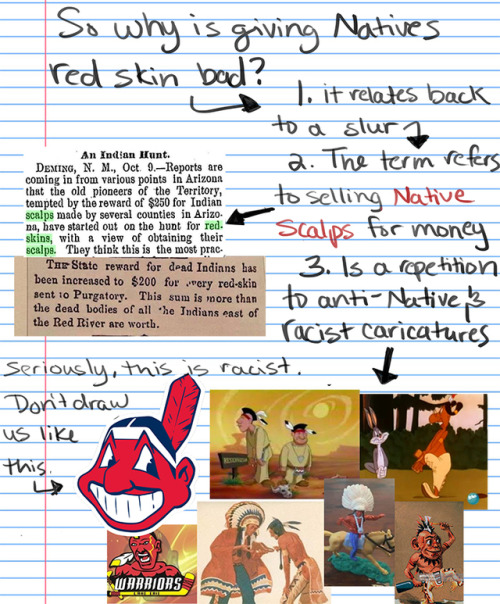
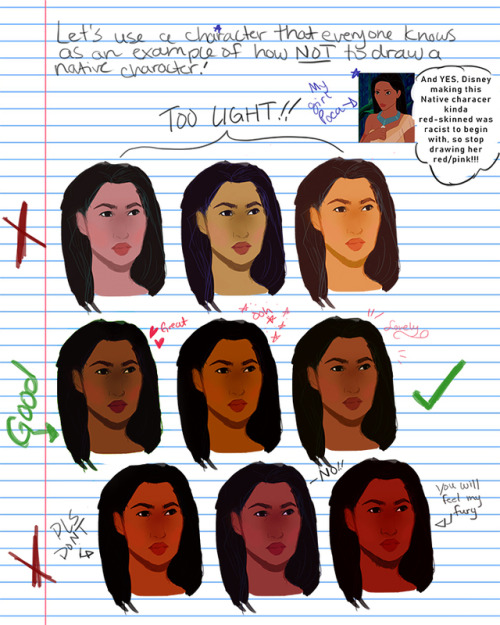
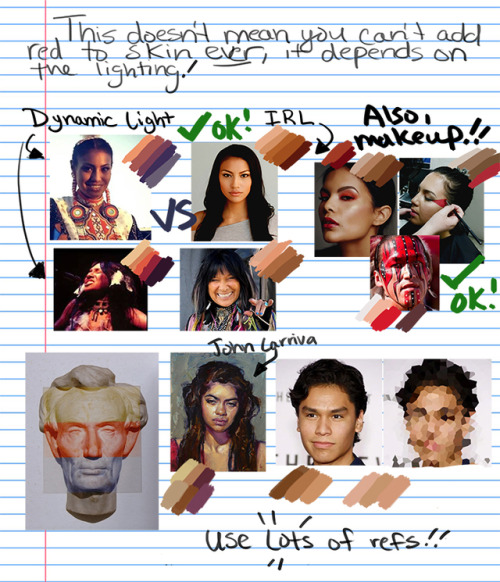
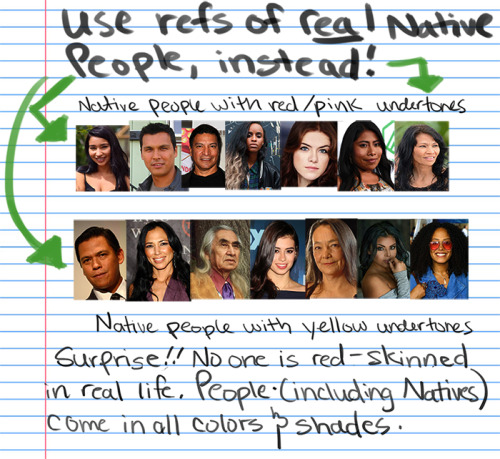
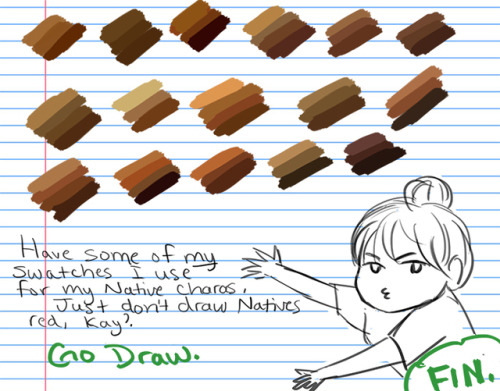
How I draw skin Part 2: DON”T DRAW NATIVE PEOPLE WITH RED SKIN!!!! A tutorial
For the first tutorial on how I draw skin, see the post here.
But seriously, I’ve seen too many drawings of Native characters with literal red/pink skin to count so just in case some of you are having troubles with drawing Native people, I’ve provided a guide for you. Please take my swatches if it helps!! and no more red skinned people, please <0<
Disclaimer: this tutorial is mainly about the artistic depictions of Indigenous Peoples in North America, where the slur and redskin caricature originated, but it would still be racist to draw other non-North/Central/South American Indigenous groups like this so…..don’t.


FLOWER SYMBOLISM IN TOKYO GHOUL
From this gif post (taken with permission)
First off, we have

White carnation: innocence, remembrance
This could both represent the Keneki we see at the beginning of the series, and the inner reminiscing of the past by the current Kaneki.
Don’t forget, don’t forget
Remember who I am
The flower was stained in blood, resulting in a

Striped Carnation: refusal (I’m sorry I can’t be with you, but I wish I could)
This could be viewed as his necessary rejection of his past self, regardless of how strongly he has been clinging on to it so far. This reminds me of these two separate lines from the OP
The me that has stood in this shaken, distorted world-
Was pierced by the memory of the time I laughed so innocently
It starts as just a droplet of doubt, but Kaneki has to accept the reality, no matter how unpleasant it is
and finally,

Red Spider Lily/ Higanbana: the flower of death
Higanbana is a very famous flower in Japan so the meaning is clear here. This flower is associated with loss, longing, abandonment and lost memories. It is believed that if one meets a person one will never see again, this flower will grow along one’s path. I find that there are elements of yearning and regret a midst the finality and interpret this as Kaneki being forced to abandon it all- the death to his former self.
I have changed; I can’t return anymore
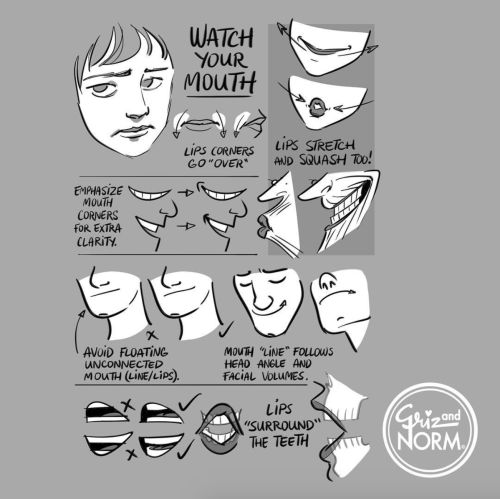
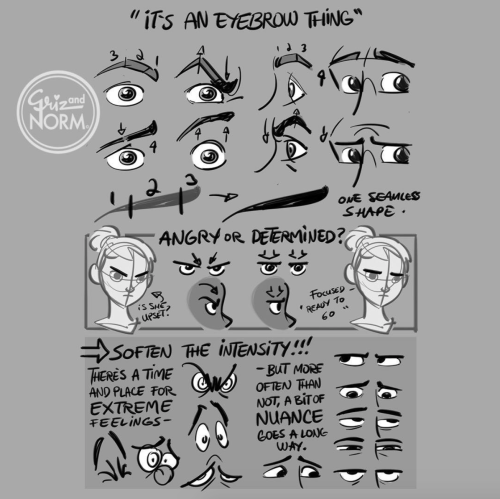
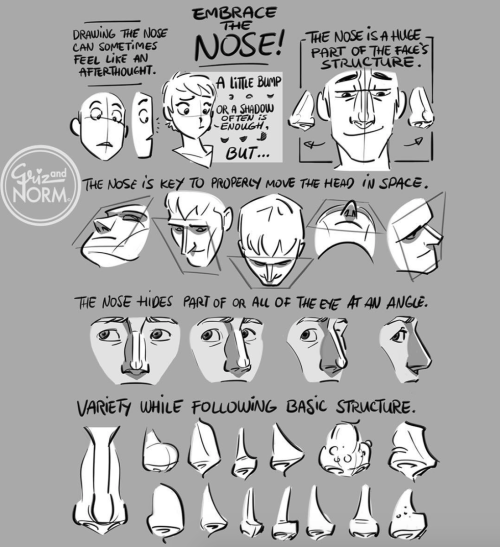
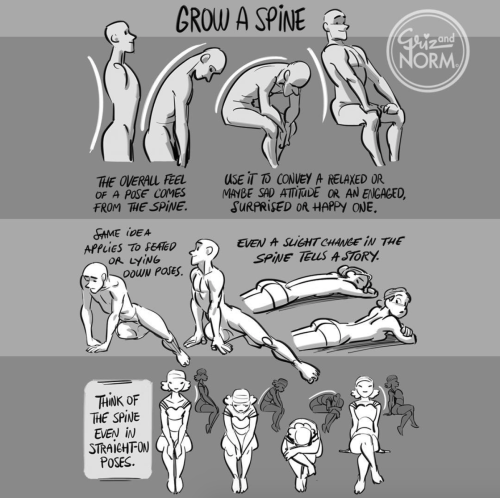
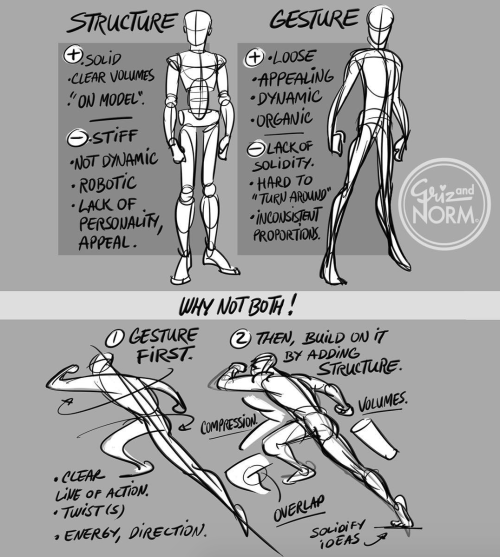
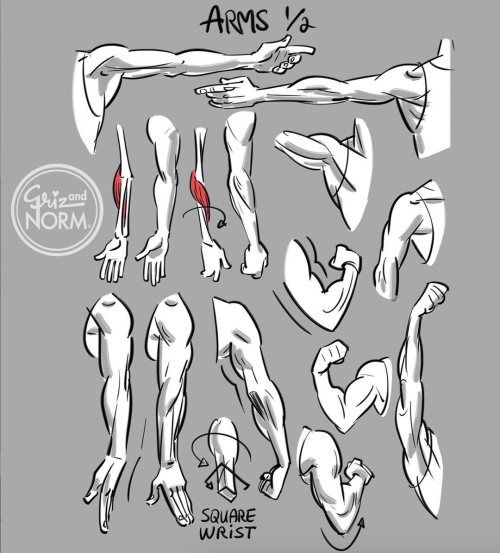
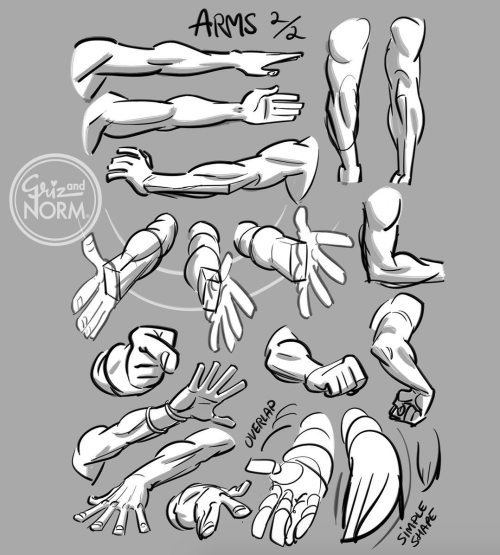
Art tutorials by Disney artists Griz and Norm Lemay
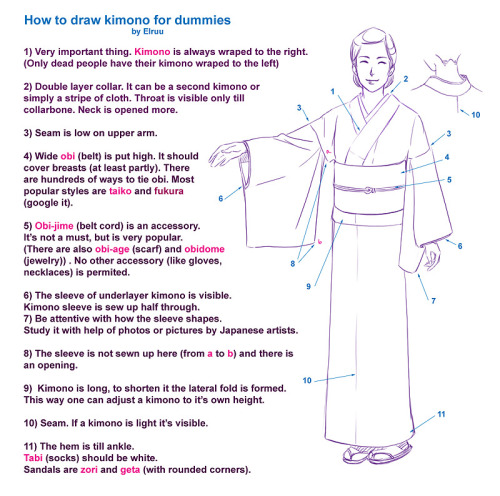

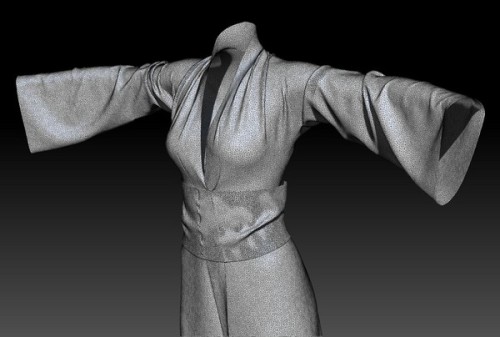


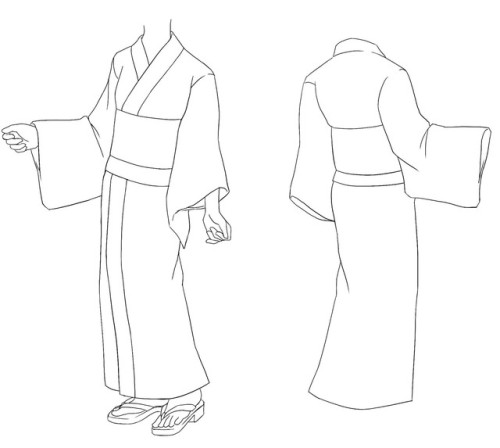
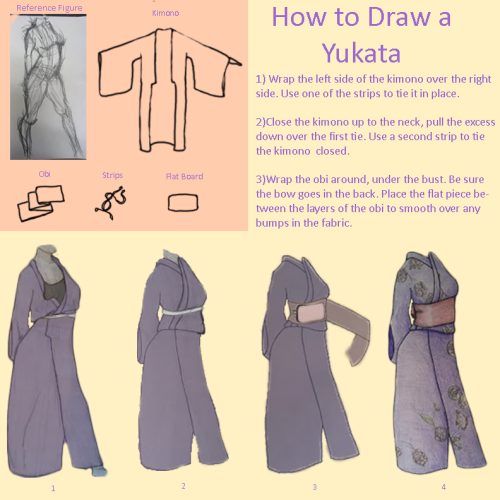

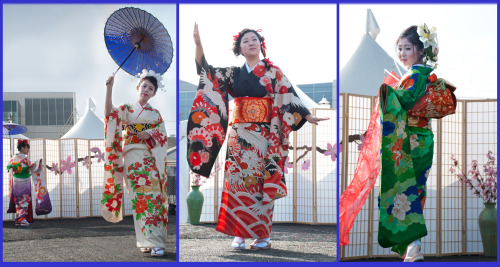

An glorious fuck-ton of kimono/yukata (for females) references.
Yes, the last one is in Japanese… hopefully you’re fluent. And, for the longer images, you gotta reverse-image search ‘em to see the text.
[From various sources]
Do you have any tips for drawing in the Pokemon style??
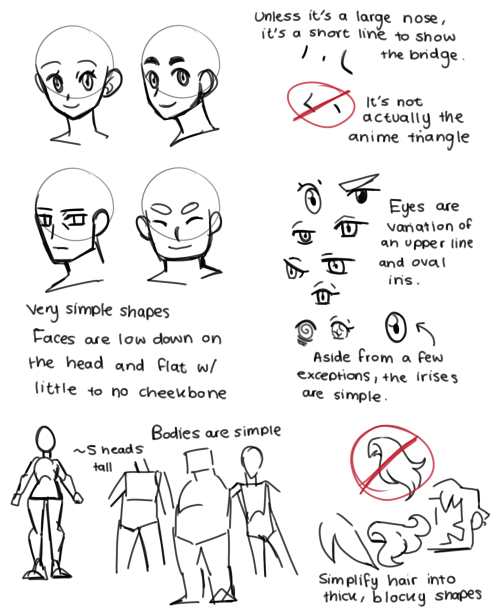
These are just some rough notes. I don’t draw that often in the pokemon style so these are a little more basic than I could give on other styles.
For colouring advice, this is a great resource to use: https://tunnaa-unnaa.tumblr.com/post/162328103349 It goes through the styles of different pokemon artists.
Not the same Anon, but hyacinths please
Hi friend, thank you so much for your interest! I’m going to go over how I draw these flowers, but I realized midway that I’m actually very terrible at drawing these in particular, haha. There’s a reason I’ve lowkey avoided doing them so far, and I think it enabled me to highlight a bit more, the way I choose my arts.
It’s quite hard to teach just “how to draw a specific flower” mostly because I myself don’t know - the most important thing I can emphasize is using references!

I personally dislike drawing these flowers in my art, and I couldn’t figure out why until I started this tutorial.
One thing I tend to notice when I look at reference pictures is how flowers move as a ‘whole’ and their relative ‘flexibility’. I pay attention to that because the way I do art, I choose the flower in part based on appearance and how natural they will look in a specific composition.

I tend to like flowers that sprout outwards and have a kind of ‘loose’ appearance. The red lines here show the ‘direction’ I want the flowers to go in.

This is where these flowers pose a bit of a problem. Because arranged in clumps, they are very stiff. It’s not a bad thing if that’s what you’re looking for, but it’s not what I wanted, exactly, for this image.

They just stick straight up, because they have very stiff leaves and a tight packed pattern. (They sometimes tilt though, mine always did). At this point, I could decide the form isn’t right, and this isn’t the flower I want. But there’s also another thing I could do, which is altering it’s appearance when I draw it, slightly.

Left is a simplified version of the shape, while the middle is a more detailed image. The furthest to the right is a close-up of a single flower. Depending on what you want to portray, you can choose to alter what you want your flowers to look like.

As you can see, when drawn closer up, the flower has a lot more flexibility!

So with this, I ended up drawing the batch of flowers a lot larger than how it would be normally, while still retaining the recognizable flower and leaf shape.
So what I’m trying to convey is that sometimes you have to study references, but then know you can pick and choose what aspects to highlight in your art. That’s I think, how you can get your flowers to look extra ‘dynamic’ in your work - by accentuating their specific shapes to work to your advantage! And also playing with their colors and such! But hyacinths come in so many colors that any would work!
I hope this is helpful to you, anon!
i have an arty question. what program do you us, how do you shade? i'm actually in love with your art style and i was wondering for some time if you could give away any tips :) i just started digtal art and i can't draw as good as i do on paper so anything is helpful
Oooh buddy, I LOVE making tutorials and explaining my way of drawing so prepare for a long (and hopefully helpful) post! >:D
Ok so first of all: I use Clip Studio paint pro and a simple Bamboo Manga Tablet from Wacom. (I’ve been using this tablet for 8 years now and it still works perfectly fine and never gave me any trouble!~ It has a great pen pressure, setting it up is very easy and it’s not super expensive)
I tried many different art programs and Clip Studio (back then it was called mangastudio 5) is still my absolute favorite. It provides you with everything you need as an artist, is very easy to understand and not as overpriced as other programs (I’m looking at you photoshop). So if you don’t have a lot of money (like me, I’m fucking poor X’D) and still want something of quality I’d definitely recommend it.
Time for the brushes:

My main brush for outlines and sketches

My absolute fav brush for shading (Opacity is around 40%)
The 2 brushes that are displayed up here are part of a set that you can download for free on this page. I love them for their rough look and they fit my sketchy art style perfectly. Sadly I can’t find the original set anymore but I made screenshots of their names:

I cannot stress this enough but you should always download new brushes and try them out. And this page is perfect for that (nearly all of them are free)! Using new brushes and combining different ones can give your art so much more personality.
But just a quick tip. I know that the range of brushes is gigantic and can be quite overwhelming. So download everything that might interest you, try them all out and only keep as little as possible! Having too many brushes will confuse you and you’ll spend more time searching through them than drawing. I’ve downloaded over 400 and only kept around 20. I only use 2 of them for my drawings and the rest is for manga backgrounds and action lines.
Now for the drawing itself:

I’m a quick artist and I care more about speed than quality. I always hated making multiple sketches so I’ll just draw the outlines
-

and fix them up without a previous sketch or making a new layer. That’s why most of my drawings look very rough and don’t have a clean look. (but I like that~)
-

For the color, I just fill in the entire picture with a neutral looking color and use the bucket tool to remove every unwanted color around the drawing. That way you won’t have any white pixelated edges inside your drawing and can add other colors quickly (again, with the bucket) without having to draw every single color per hand. Saves time and looks fine.
-

For shading (in this case his skin) I’ll combine the skin color with the color that I’ll use for shading inside this net. That way I can choose from multiple options to find the perfect color. ~
-

At first I’ll add rough shadows with dark red (Opacity 60%)
-

And then smooth them out with a lighter red. (Opacity 40%)
-

Now I’ll quickly add the last details and a few white spots on his hair and skin to give him a more realistic look
-

And you’re done! :D This took me about 15 minutes. But remember, you don’t have to be super quick. Draw at your own speed and use the style that’s the most fun for you! If you want to draw carefully with multiple layers and have clear outlines with many details then do it! Every person is different :D The most important thing is that you have fun!~
Static Texture Tutorial (Blender 2.7)
So it’s been a hot minute since i’ve posted any tutorials on here, and one of my gifs featuring a static texture recently got a nice amount of attention on twitter, so i thought i’d post a tutorial on how to make an effect like this



in blender (blender 2.7 to be exact, i haven’t updated yet because i’m an old senior citizen set in their ways). This one’s super simple, it literally takes about 5 seconds, so let’s get started.
Czytaj dalej
shading colour tips
hey yall its me the Art Mom™ to help you shade pretty
rule 1: DO NOT SHADE WITH BLACK. EVER. IT NEVER LOOKS GOOD.
red- shade with a slightly darker shade of purple
orange- slightly darker and more saturated shade of red
yellow- i think like..a peach could work but make it a really light peach
green- shade with darker and less saturated shade of blue or teal
blue- shade with purple
purple- a shade thats darker than the purple you’re using and maybe a little pink (MAYBE blue)
pink- darker shade of red
white- a really light lavender or blue..or i guess any really light colour??
black- okay listen dont use pure black to colour anything unless you want to leave it with flat colours because you cant really shade black lol
grey- a slightly darker shade of purple or blue (less saturated)
brown- slightly darker and less saturated shade of purple or red
aaaaand thats all i got lol. let me know if there is anything i should add to this list!!










as requested- my zine about fat and plus size body types from instagram!💖 happy drawing everyone!
-
 sonneve liked this · 1 month ago
sonneve liked this · 1 month ago -
 lapassionbeatrice liked this · 11 months ago
lapassionbeatrice liked this · 11 months ago -
 seeking-witchcraft reblogged this · 1 year ago
seeking-witchcraft reblogged this · 1 year ago -
 nottatastellata liked this · 1 year ago
nottatastellata liked this · 1 year ago -
 granddaughterofawitch reblogged this · 1 year ago
granddaughterofawitch reblogged this · 1 year ago -
 daughterofsekhmet-bast liked this · 1 year ago
daughterofsekhmet-bast liked this · 1 year ago -
 hypodermicfroggy reblogged this · 1 year ago
hypodermicfroggy reblogged this · 1 year ago -
 artemis-potnia-theron liked this · 1 year ago
artemis-potnia-theron liked this · 1 year ago -
 grymrot reblogged this · 1 year ago
grymrot reblogged this · 1 year ago -
 drdandy liked this · 1 year ago
drdandy liked this · 1 year ago -
 godseaters liked this · 1 year ago
godseaters liked this · 1 year ago -
 akishounen liked this · 1 year ago
akishounen liked this · 1 year ago -
 darkpersoncrusade liked this · 2 years ago
darkpersoncrusade liked this · 2 years ago -
 saywvers liked this · 2 years ago
saywvers liked this · 2 years ago -
 alcoholmaenad reblogged this · 2 years ago
alcoholmaenad reblogged this · 2 years ago -
 batmeringue reblogged this · 2 years ago
batmeringue reblogged this · 2 years ago -
 deathsmallcaps reblogged this · 2 years ago
deathsmallcaps reblogged this · 2 years ago -
 deathsmallcaps liked this · 2 years ago
deathsmallcaps liked this · 2 years ago -
 vigilantsycamore reblogged this · 2 years ago
vigilantsycamore reblogged this · 2 years ago -
 vigilantsycamore liked this · 2 years ago
vigilantsycamore liked this · 2 years ago -
 magicwingslisten liked this · 2 years ago
magicwingslisten liked this · 2 years ago -
 billthepirate19 liked this · 2 years ago
billthepirate19 liked this · 2 years ago -
 fatenumber4ever reblogged this · 2 years ago
fatenumber4ever reblogged this · 2 years ago -
 vviths liked this · 2 years ago
vviths liked this · 2 years ago -
 alcoholmaenad reblogged this · 2 years ago
alcoholmaenad reblogged this · 2 years ago -
 thevoiceofmadness liked this · 2 years ago
thevoiceofmadness liked this · 2 years ago -
 orisnitsa liked this · 3 years ago
orisnitsa liked this · 3 years ago -
 rabarbarzcukrem reblogged this · 3 years ago
rabarbarzcukrem reblogged this · 3 years ago -
 rabarbarzcukrem liked this · 3 years ago
rabarbarzcukrem liked this · 3 years ago -
 threshold-of-revelation liked this · 3 years ago
threshold-of-revelation liked this · 3 years ago -
 otherworldly-elements liked this · 3 years ago
otherworldly-elements liked this · 3 years ago -
 skelebonesjones liked this · 3 years ago
skelebonesjones liked this · 3 years ago -
 kurtttakmeeeeehomeee liked this · 3 years ago
kurtttakmeeeeehomeee liked this · 3 years ago -
 sharkpeber liked this · 3 years ago
sharkpeber liked this · 3 years ago -
 lostoreos liked this · 3 years ago
lostoreos liked this · 3 years ago -
 oli-sheep reblogged this · 3 years ago
oli-sheep reblogged this · 3 years ago -
 oli-sheep liked this · 3 years ago
oli-sheep liked this · 3 years ago -
 primaryblogsoicanhaveapassword liked this · 3 years ago
primaryblogsoicanhaveapassword liked this · 3 years ago -
 ulvensang liked this · 3 years ago
ulvensang liked this · 3 years ago -
 broomsick reblogged this · 3 years ago
broomsick reblogged this · 3 years ago -
 broomswept liked this · 3 years ago
broomswept liked this · 3 years ago -
 dunnnja liked this · 3 years ago
dunnnja liked this · 3 years ago -
 upyrica liked this · 3 years ago
upyrica liked this · 3 years ago

Sylwester | i will mostly post sketches, because i'm too lazy to end them
196 posts